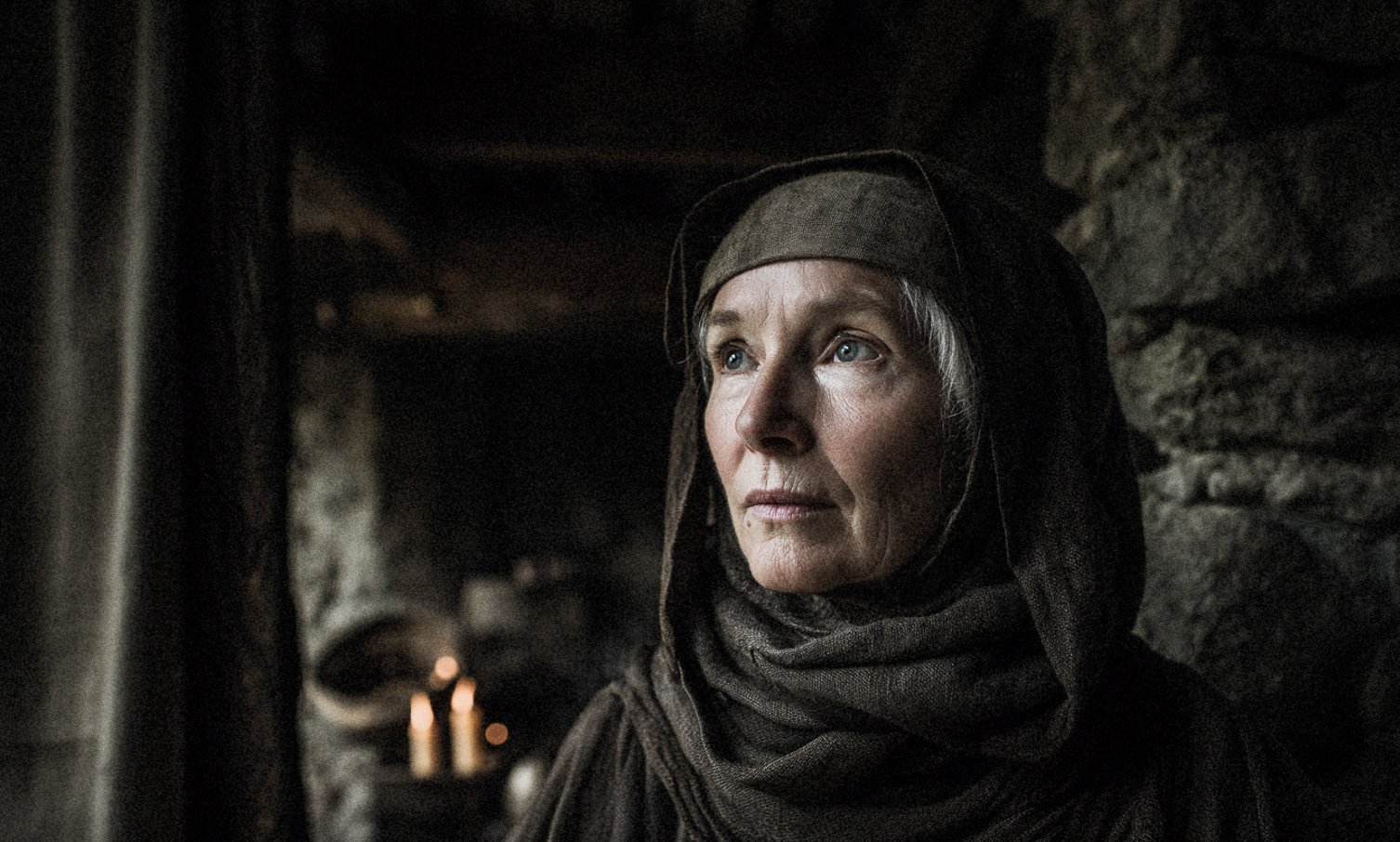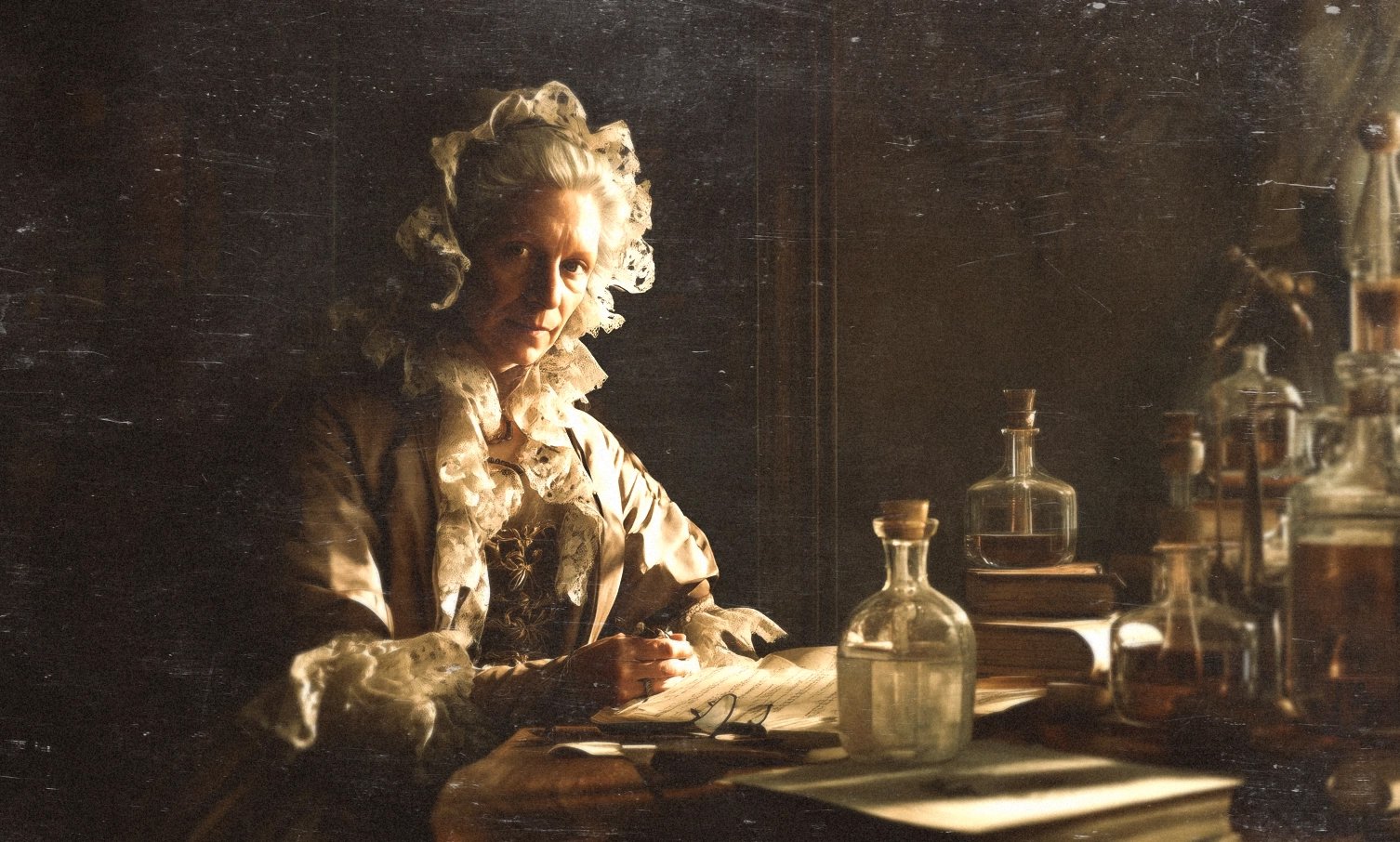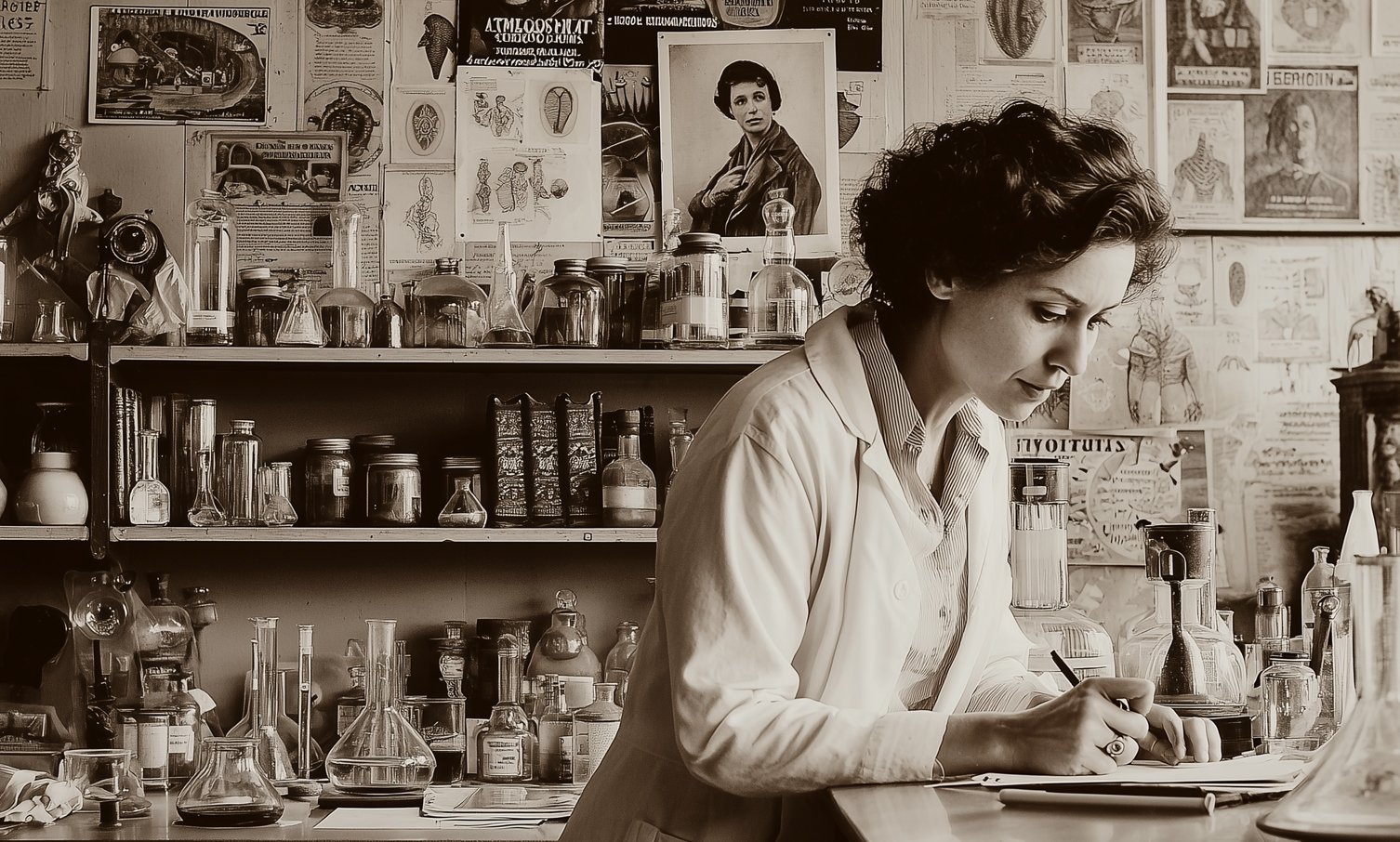The History of Menopause: A Story Told Through Time
Reading time 13 min

Reading time 13 min

Menopause—the end of a woman’s menstrual cycles—has always been part of the human experience. Yet the history of menopause reveals a much deeper story shaped by medicine, myth, and cultural meaning.
In different eras, menopause has been interpreted through prevailing medical theories (from ancient humoral imbalances to modern endocrinology) and shaped by cultural attitudes (from reverence of elder women to stigmatization of the “change of life”)10.
What is the history of menopause?
The history of menopause spans from ancient ideas of “bad blood” to modern hormone science. Early cultures saw menopause as dangerous or mystical. Over centuries, medicine evolved from superstition to science, yet stigma persisted. Today, menopause is finally viewed as a complex, natural transition—worthy of clear understanding, not fear.
Long before the word menopause existed, women experienced it. Quietly, often without a name, and without much medical understanding. In ancient cultures, menopause was interpreted through the lens of whatever theories ruled the day: be it humors, energy flows, or divine design.
While explicit mentions of menopause are rare, ancient Egyptian medical papyri, such as the Kahun Gynaecological Papyrus, focus on fertility and gynecological disorders, suggesting awareness of reproductive changes. However, a clear description of menopause as a distinct phase is absent1.

The concept that menstruation eventually stops traces back to classical Greece. In the 4th century BCE, Aristotle documented that menstruation typically ceased around age forty, continuing until age fifty in some women, after which pregnancy was no longer possible. He essentially recognized menopause as the natural end to a woman’s fertility2.
According to Hippocrates in the 5th century BCE, health depended on balancing four humors: blood, phlegm, black bile, and yellow bile. Menstruation was viewed as the body’s way of expelling excess or “bad” blood.
When menstruation stops, physicians believed harmful blood accumulated, threatening a woman’s health. Consequently, menopause was perceived as a potentially dangerous state of excess (“plethora”), prompting doctors to prescribe bloodletting orto remove what they saw as stagnant blood3.
Ancient Roman medicine largely borrowed from Greek theories, especially the humoral concepts introduced by Hippocrates. Galen, a prominent 2nd-century Roman physician, further developed these ideas, maintaining the belief that menopause resulted from an imbalance or blockage of humors.
Around the same time, Soranus of Ephesus, another influential physician practicing in Rome, wrote extensively about menstruation and its cessation. While he advised women to stop attempting pregnancy in their late forties, he, like Aristotle before him, observed that pregnancy after age fifty was exceptionally rare.
Beyond medicine, Roman attitudes toward postmenopausal women were complex. Cultural stereotypes were often harsh—Roman writers depicted older women negatively, caricaturing them as unattractive or excessively sexual.
Yet, Roman law and society also granted these women greater autonomy. Older widows, no longer able to have children, often gained greater legal freedom4.
Ancient Ayurvedic medicine from South Asia approached menopause differently from Greek or Roman traditions. Ayurveda refers to menopause as Rajonivritti, literally meaning the “cessation of monthly flow.” Classical texts typically placed this transition around age fifty.
Ayurveda did not regard menopause as an ailment, but rather as a natural progression from the pitta stage—marked by heat and metabolic energy—to the vata stage. This latter phase is characterized by aging, dryness, and a heightened susceptibility to imbalances.
According to these ancient texts, menopause occurred as a result of the natural depletion of a woman’s internal vitality (ojas) and the gradual aging and drying of body tissues. Sushruta specifically identified age fifty as a typical milestone for this transition5.
Despite recognizing menopause as natural, medieval medicine continued relying heavily on humoral theories. Doctors feared that the stop of monthly bleeding could cause humors to accumulate, potentially leading to imbalances such as excessive sadness or irritability.
Consequently, they recommended treatments intended to mimic menstrual bleeding, including periodic bloodletting—commonly by leeches or incision—as well as herbal remedies, like sage and motherwort, to help restore balance and soothe symptoms6.
Medieval Europe’s perspective on menopausal women was complex. Religion placed a high value on women’s ability to bear children and remain chaste. Once menstruation stopped, women were overlooked and deemed less significant.
Yet menopause could also grant women greater independence. Especially in peasant communities, older women typically played important caregiving roles for grandchildren or served as experienced advisers.
However, this independence wasn’t always viewed positively. Postmenopausal women, especially widows without male protection, became frequent targets during medieval witch hunts. Although menopause wasn’t directly blamed, societal anxieties around women no longer defined by fertility and motherhood made them vulnerable to suspicion and persecution7.

Even during the Renaissance period, European medicine continued interpreting menopause through the lens of ancient humoral theories. In 1563, Italian physician Giovanni Marinello published one of the first books devoted to women’s health, describing menopause in particularly grim terms.
He suggested that once menstrual bleeding stopped, a woman would immediately fall ill from accumulated “corrupted blood,” reinforcing the perception of menopause as an inherently dangerous state.
However, by 1582, other voices emerged: the French physician Jean Liébault openly challenged this view, suggesting that menstrual blood wasn’t toxic and advocating for other explanations, such as dietary or organ-related changes, to explain midlife symptoms.
Yet, despite evolving medical discussions, menopause remained surrounded by mystery and apprehension. Physicians recommended treatments like bloodletting (sometimes using leeches or even deliberate cuts) to artificially replace the lost menstrual flow and restore humoral balance.
These intrusive methods reflected ongoing fears about women’s changing bodies and the belief that women needed to bleed regularly to stay healthy8.
By the 18th century, as science advanced, traditional views on menopause began to shift. William Harvey’s 1628 discovery of blood circulation challenged the older idea of “blood stagnation,” prompting doctors to rethink earlier explanations.
In the late 1700s, physicians introduced more mechanistic theories, suggesting menstruation stopped due to physical changes rather than harmful blockages. While these early ideas—like ovaries “drying up” or the uterus shrinking—were not fully accurate, they paved the way for the modern concept of ovarian follicle depletion.

Despite these developments, menopause continued to be heavily medicalized. It was often portrayed in dramatic terms, causing mental instability, sadness, or even madness. Doctors in the 18th and 19th centuries emphasized emotional and psychological turmoil during this time, reinforcing fears that would persist for decades9.
A key turning point in understanding menopause was the creation of the term itself. In 1828, the French physician Charles Gardanne introduced the word ménopause, aiming to unify the many confusing descriptions previously used—such as “the critical age,” “women’s inferno,” and “middle-age decline.”
Gardanne’s term, derived from Greek, literally means the “cessation of monthly periods.” By giving menopause a clear, medical name, Gardanne helped transform it into a distinct stage of life recognized by modern medicine11.
By the late 19th century, physicians began experimenting with forms of hormone therapy. Doctors began giving menopausal women powdered ovarian extracts—essentially ground-up cow ovaries—and noticed symptom relief.
They didn’t yet realize they were delivering estrogen. By 1890, the pharmaceutical company Merck started selling these powders, marking the first attempts at hormone replacement therapy.
At the beginning of the 20th century, biology experienced a breakthrough with the discovery of hormones. Researchers quickly identified the ovaries as a major hormone source. By 1900, scientists noted that removing ovaries led to symptoms resembling menopause, clearly demonstrating the ovaries’ crucial role in maintaining a woman’s hormonal balance.
In the 1900s and 1920s, researchers successfully isolated estrogen from animal ovaries. This discovery clarified that menopause occurs naturally due to the depletion of follicles (nests that hold eggs) in the ovaries. Armed with this knowledge, in the 1930s and 1940s, scientists began creating treatments to replace decreasing estrogen.
One early medication, Emmenin, was made from human placenta extracts. In 1942, Premarin—a mix of estrogens, derived from pregnant mare’s urine—was approved by the FDA and quickly became the standard menopause treatment. By the 1960s, synthetic estrogens like estradiol were introduced, making hormone replacement therapy (HRT) widely accepted and transforming menopause management by the late 20th century.

Mid-20th-century attitudes toward menopause were often dismissive or openly misogynistic. In 1930, Sigmund Freud claimed that after losing their “genital function,” women became irritable, depressed, or overbearing.
In 1966, gynecologist Robert Wilson took it further, calling menopausal women “castrates” and insisting that estrogen therapy was necessary to keep them attractive, agreeable, and “easier to live with.” His bestselling book “Feminine Forever” reinforced the idea that menopause was a disease to be fixed rather than a natural transition12.
This thinking turned menopause into something to be “cured.” Millions of women were prescribed estrogen, even if they had no symptoms. While HRT helped many, the underlying message was clear: menopause was something to fear, hide, or avoid altogether.
Women spoke about it in hushed tones as “the change,” while stereotypes of menopausal women as irrational or unstable spread through jokes and stories.
By the late 1960s, the women’s liberation movement pushed back. Gloria Steinem and other feminists challenged the idea that aging in women needed medical intervention.
In 1991, Germaine Greer’s “The Change” bluntly called out the male-dominated medical field for treating menopause as a problem rather than a normal life stage. These voices helped change the conversation, laying the groundwork for a more balanced understanding of menopause13.

Today, menopause transition is finally being studied as a complex biological transition, not just a reproductive endpoint. Thanks to advances in neuroendocrinology and systems biology, we now understand that the drop in estrogen affects far more than the ovaries.
It alters brain function, bone turnover, heart health, and metabolic processes. Neuroimaging studies have shown that estrogen plays a role in brain energy use and temperature regulation, helping to understand symptoms like hot flashes, brain fog, and sleep disturbances.
Researchers are also paying closer attention to perimenopause, recognizing it as a critical window for both symptoms and long-term health impacts. There’s growing focus on personalized approaches to hormone therapy: when to start, how much, and in what form.
Beyond hormones, new areas of research include the gut microbiome, immune aging, and cellular stress responses; all pointing to menopause transition as a whole-body shift, explained by biology.
Menopause has always been part of the human experience, yet its meaning has been shaped by shifting medical theories and cultural biases.
For centuries, it was misunderstood—first seen as a dangerous buildup of “bad blood,” then feared as a sign of decline, and later treated as a condition to be “fixed” rather than a natural phase of life. The journey from superstition to science has been long, and while progress has been made, menopause is still too often medicalized, stigmatized, or simply ignored.
Today, the conversation is finally shifting. We understand menopause in terms of hormonal changes, and we recognize that experiences vary—some women suffer debilitating symptoms, while others move through it with few issues. But the real challenge is changing how we talk about it.
Menopause isn’t something to be feared, hidden, or fought—it’s something to be understood. Women deserve clear, science-based information and options, free from outdated myths and patronizing narratives. The history of menopause has been written for us for too long—it’s time we rewrite it ourselves.
Dr. Jūra Lašas
1.
Smith, L. The Kahun Gynaecological Papyrus: ancient Egyptian medicine. (2011) https://doi.org/10.1136/jfprhc.2010.0019
2.
Aristotle. The history of animals. (4th century BCE) https://www.goodreads.com/book/show/66586360
3.
Hippocrates. Nature of Man. (5th century BCE) https://www.goodreads.com/book/show/523339.Hippocrates_4
4.
Flemming, R. Fertility control in ancient Rome. (2020) https://doi.org/10.1080/09612025.2020.1833491
5.
Ganguly, S. et al. Management of menopause (RAJONIVRITTI) through ayurveda: a review. (2022) https://doi.org/10.7897/2277-4343.130370
6.
Greenstone, G. The history of bloodletting. (2010) https://bcmj.org/premise/history-bloodletting
7.
Fadel, H. et al. A Glimpse into Gynecologic Practice During the Islamic Golden Age. (2024) https://doi.org/10.1007/s43032-023-01423-5
8.
Grafton, A. et al. Natural Particulars: Nature and the Disciplines in Renaissance Europe. (1999) https://www.goodreads.com/book/show/25009.Natural_Particulars
9.
Ribatti, D. William Harvey and the Discovery of the Circulation of Blood. (2009) https://doi.org/10.1186/2040-2384-1-3
10.
Singh, A. et al. A historical perspective on menopause and menopausal age. (2002) https://rb.gy/cizzdr
11.
Gardanne, C. De La Ménopause Ou De L’âge Critique Des Femmes. (2018) https://www.abebooks.com/9780274819850/Ménopause-Lâge-Critique-Femmes-Gardanne-0274819856/plp
12.
Blackie, S. Hagitude: Reimagining the Second Half of Life. (2022) https://www.amazon.co.uk/Hagitude-Reclaiming-Second-Half-Life/dp/1914613090/ref=tmm_hrd_swatch_0
13.
Coney, S. The Change: Women, Ageing and the Menopause. (2002) https://doi.org/10.4324/9780203977392-13